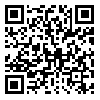BibTeX | RIS | EndNote | Medlars | ProCite | Reference Manager | RefWorks
Send citation to:
URL: http://journal.muq.ac.ir/article-1-23-en.html
Background and Objectives Exercise affects the immune system. The aim of this study is comparison of the effect of active and passive recovery (AR and RR, respectively) on differential white blood cell (WBC) count after an exhaustive exercise session in athlete males. Methods Twenty male athletes who signed an informed consent form were randomly divided in to two equal groups. Their blood samples were drawn at rest, immediately after an exhaustive exercise session, immediately after 15 minutes active and passive recovery from an exhaustive exercise session. A WBC’s (lymphocytes, monocytes, neutrophils, basohils, and eosinophils) count was done on all of these samples. This exercise protocol was based on the Bruce Protocol Treadmill Stress Test until feeling excessive fatigue followed by AR (first group), and RR (second group).Wilcoxon signed-rank and Mann-Whitney test were used for descriptive and statistical analysis on collected raw data. Statistical significance in this analysis was set at P ≤ 0.05. Results A session of exhaustive exercise increased the number of WBCs (except for eosinophils) with a statistical significant differences of (P<0.05). A Comparison of the changes before and after workout, showed no statistical significant difference. Also, a 15 minute AR and RR, didn't alter WBCs count (all P>0.05). Conclusion The results show a session of exhaustive exercise increases the blood leukocytes, except for eosinophils. Also, taking 15 minutes recovery (AR or RR) has no effect on athlete's WBC count. It means the type of recovery has no special and different effect on athlete's WBC count. In fact, if there are any changes in WBC count during or after exhaustive exercise, they are not due to the type of 15 minutes recovery. Furthermore, under the conditions of this study after completing the AR and RR, number of the blood leukocytes was over their basal level.
Received: 2016/02/13 | Accepted: 2016/02/22 | Published: 2016/02/22
| Rights and permissions | |
 |
This work is licensed under a Creative Commons Attribution-NonCommercial 4.0 International License. |







